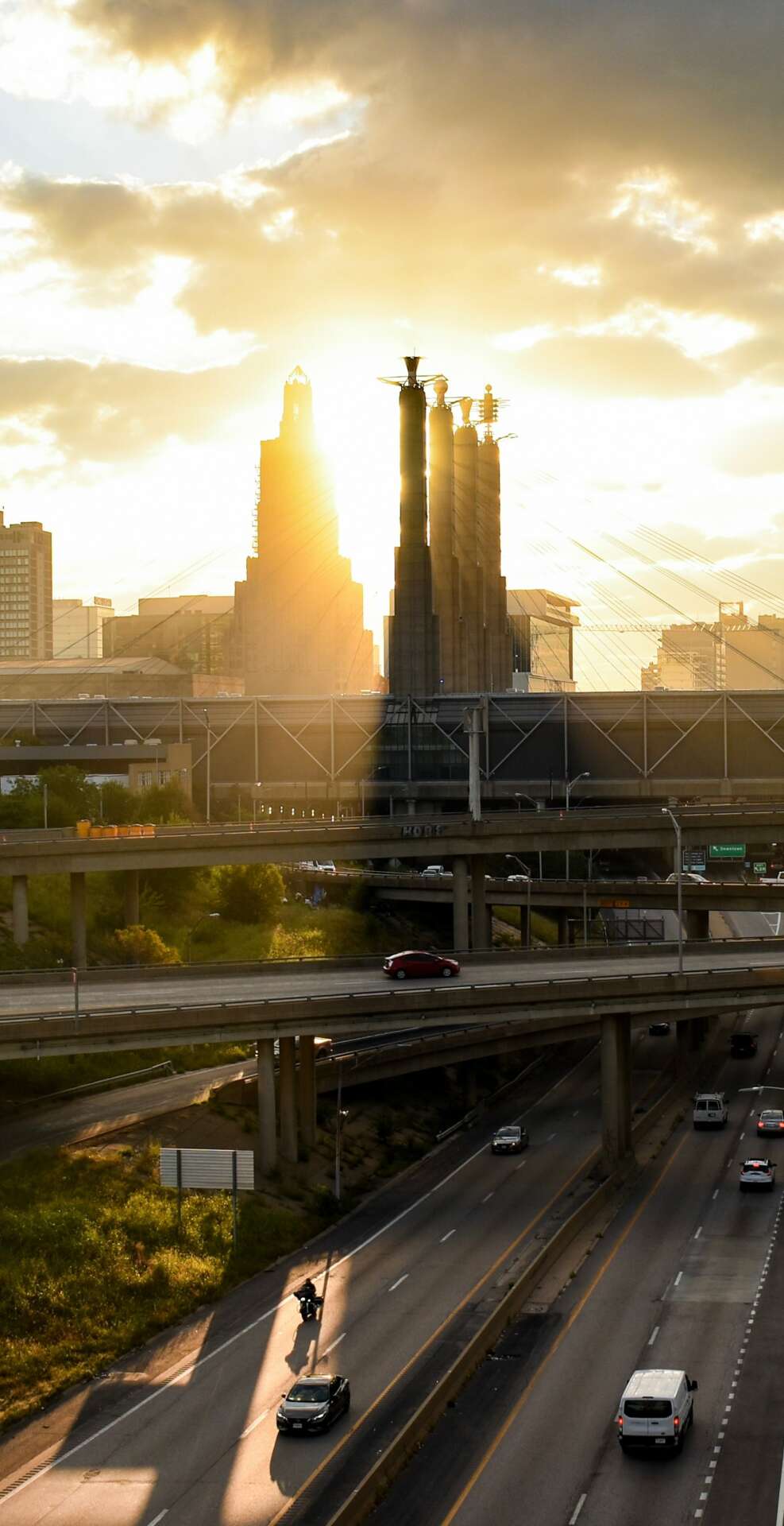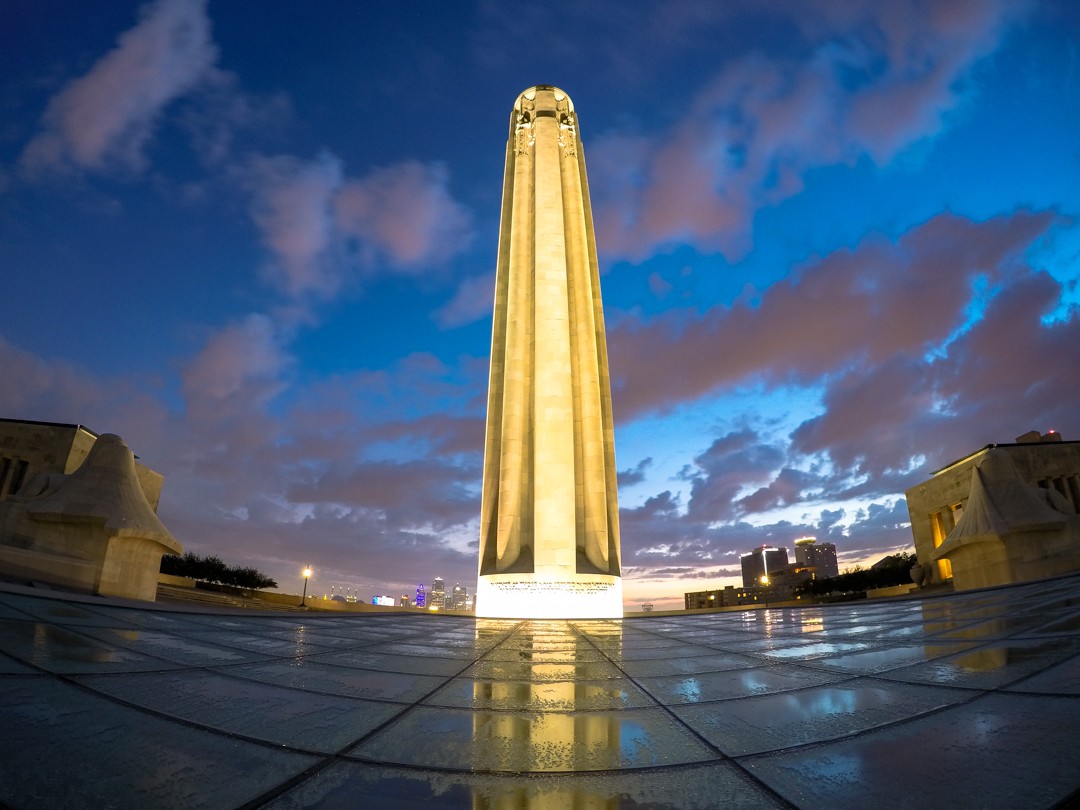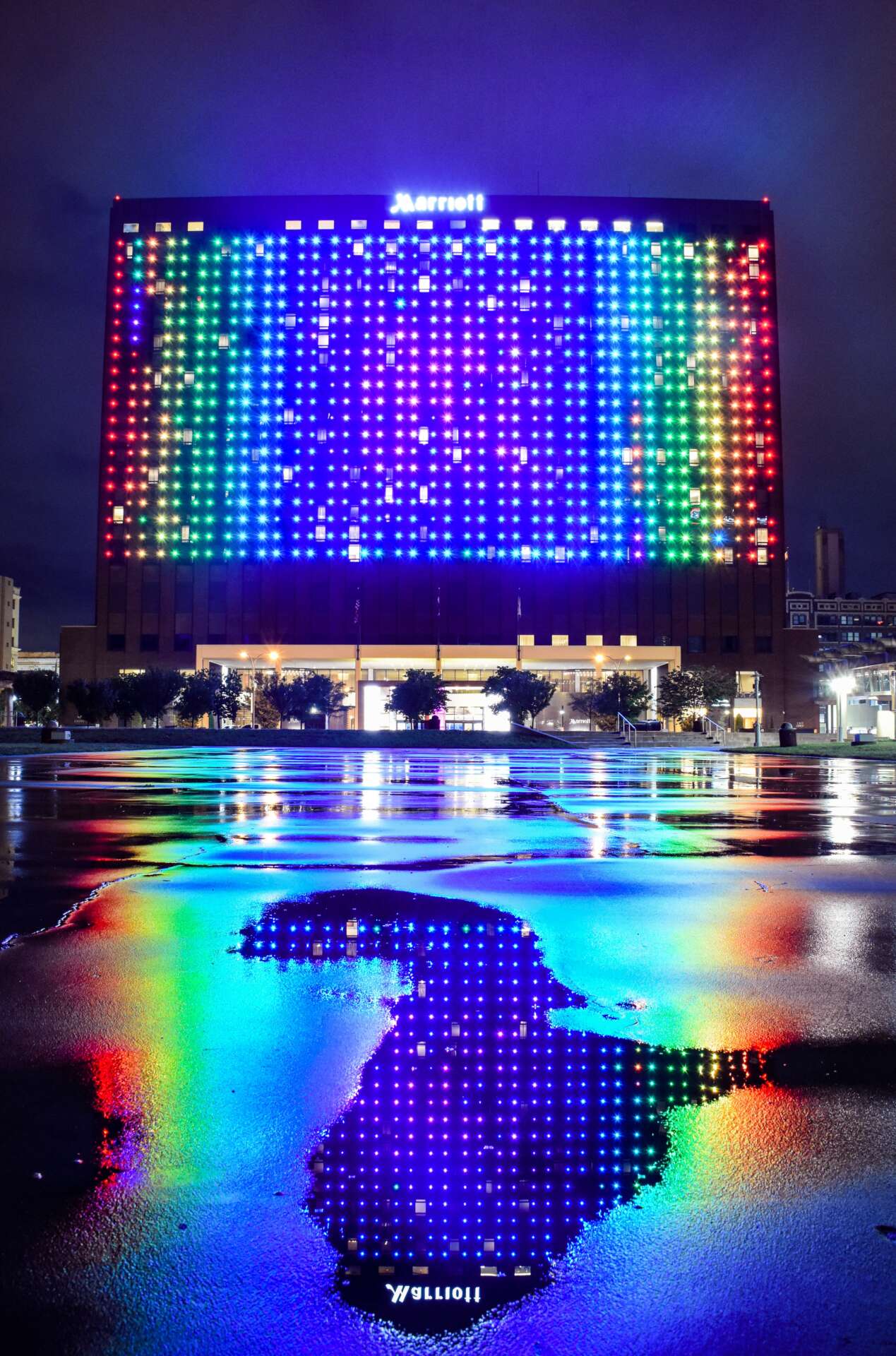We recently connected with Tyler Noah and have shared our conversation below.
Hi Tyler, thanks for joining us today. So, let’s start with trends – what are some of the largest or more impactful trends you are seeing in the industry?
Motion. After Effects work. I would describe it as “all that moving photo stuff” to non-media people during conversation. Match-cutting, interpolation, hyperlapses, stop motion hyperlapses, or just movement in general, but utilizing still photos to create very technical, creative work that still tells a narrative, or follows a certain construct pertaining to relevant media archetypes. It provides opportunities because not many media artists have the passion to learn these techniques, and it isn’t something that’s taught in college, or grad school. People see it and say the same thing, “that looks hard”, so they don’t question the value of it. Whereas if you’re say, approached to shoot a music video, people will offer you $500 as if you’re going to be excited about it, as opposed to undervalued.
I started noticing this several years ago while taking a timelapse photography class. I’m a big advocate for social media, as well as studied it extensively, so I started seeing this type of work integrating into mainstream media very quickly. Now, if you watch commercials you’ll see it everywhere, even forced into a commercial simply because that’s how these so called trends really work. They’re formulas for success. Once it’s seen over and over, especially by institutions like the NBA, or illustration being used by MLB (Major League Baseball), Nike using animation, nearly every commercial using match cutting and hyperlapse photography…it’s only a matter of following that template to find success, or at the very least start to garner some attention.
I believe the attention span of everyone, including myself, has become so slim, movement is essential. Still photos are almost irrelevant now, even still timelapse shots. Drone flyovers became extremely popular, because it was new and refreshing, but the term hyperlapse has been misconstrued by drone photography as well. It means moving timelapse, and most drone hyperlapses are shot in auto mode. It’s very much not the same thing, whereas I’m moving a tripod incrementally then stabilizing the photos later in after effects, sometimes covering a half mile of distance to create the same effect. But to me, it’s about the challenge, and allowing your work to speak for itself, commercial speaking, monetarily speaking. So one of the concerns I have, as small as it may seem, are drone shots mislabeled. I love drones, but I believe such a diverse and capable piece of equipment should be used to it’s optimum capabilities. We’re out here to challenge ourselves, be creative, establish ourselves as individuals. Right? I want to do the most difficult photography, because that’s how I want to stand out. I don’t post much on my own instagram, or haven’t much the past several years, which is a huge disadvantage. But I always waited to wait and sort of refocus my work on strictly motion timelapses, branding myself as a “hyperlapse creator”, because I see how much it’s ilpprmred itself into mainstream commercial media, which amounts to jobs for me. After only a few posts, the reception was kind of surreal. I had people stopping me on the street all the time, asking if I’m “that guy who does those moving shots..@tylernoahkc”. People started sending me messages a lot, just really great feedback that I appreciated a lot, but I have to say I expected it. It was my goal. I guess to come full circle, the trends are the trends. Don’t copy what you see, but if you want to be successful especially as a freelance media artist, you have to understand what’s relevant. You have to be adaptable too, because every kid is an after effects wizard these days, they grew up with it like I grew up with Nintendo. That being said, learning these trends is just as important as understanding them, their downfalls, their potential, how to approach it, etc. It’s all very thorough, I could genuinely write a book about this subject.


Tyler, before we move on to more of these sorts of questions, can you take some time to bring our readers up to speed on you and what you do?
I’m what I would call just an all around digital media artist. I began as strictly a videographer/editor, with the same goals in mind; to focus on editing as to not compete with the millions of student directors, because you could get overlooked by sheer numbers. Not lack of talent. Editors have tons of creative control, you’re not in the spotlight, and if you do a good job it’ll open up a lot of doors. I spent many years honing those skills. Handheld camera movement, really getting into the groundwork of everything, learning very hands on. At the time, my initial college had a slumping film department, so I decided to put my focus into something more beneficial for me. Skateboarding in Kansas City at the time was being put on an international pedestal. Sean Malto, a renowned professional from KC, it was his heyday, and all his sponsors were very wisely using Kansas City in every marketing campaign. It was brilliant. I saw all the untapped talent here after I tore my ACL, so I needed a project to work on, I was going crazy. I decided to move back to Kansas City and dove head first into that project, and I really can’t articulate how much filming skateboarding translated directly into conventional filmmaking, photography, animation, design, everything. People here “skate video” and it has a stigma, so when I discuss it I tend to want to explain it throughly. But now, the times have caught up, and I can use one example to sort of sum up the skills I picked up and how much I was learning. A man was nominated for an Emmy last year for HBO’s show “Winning Time” about the Los Angeles Lakers during the 80’s. It was for a shot during a basketball sequence. I remember seeing it and instantly knowing it was done on rollerblades, and he probably had some experience ice skating or something because I played hockey when I was growing up, and he shot it so well…weaving in and out of people perfectly, I just couldn’t help but think he had more experience than just strapping on some rollerblades. But my point is, as soon as I heard that shot was up for an Emmy, I knew I could’ve done that on a moments notice…and it sort of validated things, like, “my camera skills are at that kind of level”. It was a great feeling. I feel like the media industry has really started to be much more open minded towards unconventional approaches, or just hiring people that otherwise wouldn’t normally get that opportunity.
After spending about 5 years finishing my skateboard film, I wanted to redirect my work towards my original goals. I went back to college, to a small private art school that was very rigorous. I felt held back, but I found a way to soak up as much knowledge as I could through electives, professors, anything that would help me learn what I needed to learn. While there, I worked for the Nelson Atkins museum in Kansas City, shooting their artwork and working on all media related jobs for a summer. That was very rewarding, and sort of pushed me more towards the photography aspect of media work. By then I’d been trying to perfect everything from animation to light painting to motion timelapses…I guess I just knew being prepared for any situation would help me get the most opportunities. I was given a job a few months later by a Grammy nominated sound recordist, continued work for them for about two years, focusing on a learning app for children. I was taking children’s book illustration classes by a man named Bob Kolar, a world famous children’s book illustrator, learning a lot that pertained to the moving image. Eventually after graduating I wound up shooting murals, and I found that to be symbiotic with this new type of motion photo work. Unfortunately, that’s when I realized I needed to step out on my own again too. I was undervalued. I actually had someone steal from me, never pay me, and that led me to really rethink my whole approach.
Since then I began working on a two year long Timelapse project documenting Kansas City, during an historic few years. My aspirations are to eventually work on feature length stop motion films. Stop motion production houses use timelapse work to document all their BTS processes. So I figured, well, if I make a really polished reel of Timelapses, I can use that to get a job with a stop motion studio and work my way up from there. That’s still my ultimate goal, but I started seeing so much opportunity along the way, I don’t feel like I’d be doing myself a favor by not utilizing this unique skill set I accumulated over the years. I want to brand myself, with my own look that instantly stands out. I’d like to use that to gain capital, and hopefully work on my own pet projects for the next few years while continuing to do work for companies, institutions, etc around the area. Recently I’ve been shooting hyperlapses for the Kauffman Center in Kansas City, a remarkably beautiful building. It’s very interactive in terms of how it should be shot/seen, simply bc it looks so different from every angle. That’s kind of when I knew I should start more actively honing my hyperlapse skills, which is what I’ve been primarily fixated on the last 5-6 months. For me it’s so visceral, almost like you’re right there…and it tells a narrative much differently than a still timelapse. When you’re moving around & changing perspectives, especially spreading it out over a few hours of time, it becomes much more than just a shot. It’s more of an interactive experience. Right now I’d like to do more of this work to highlight Kansas City in a different way, showing it’s beauty and uniqueness in a way no one’s ever done before. Fingers crossed, I feel it’s a tough task but something I’ve been almost waiting for my whole life.


Let’s talk about resilience next – do you have a story you can share with us?
In 2019 I transferred to my alma mater. My family has substance abuse issues that have been very hard to deal with at times, but I managed to keep a healthy balance and independence from it. My uncle was my best friend. He went through a really hard part of his life, and ended up taking his life shortly after. It was heartbreaking. At the time I was gearing up for a whole series of short films sort of like the show “Shameless”. Masking very raw emotional content with humor is a really competent and interesting way to get across these otherwise complex and/or traumatic issues people like myself have had to undertake.
After he was gone, I just couldn’t do it. I was too sad, and that was the busiest most serious time of my life. Where I was working, the school I went to, you could not show an emotional or personal side unless it was in your work. I was very withdrawn for a few months, not waiting to create, feeling lost on what I wanted to create…
Right before this, as the new semester started when I transferred, my project partner and one of my dearest friends dropped out and tried to harm himself too. I felt so terrible for him. I had to finish all our projects while at my new school to get my grades transferred, and it was like everything started going wrong. My car bumper got knocked off the first few weeks of class, and in Missouri you have to get an inspection to renew your tags, but can’t pass one without a bumper. I had no time, overworked beyond description, and getting $72 tickets every other day from a police officer, despite my many notes and efforts to explain. Later my uncle, he just wanted to get out of town, but he stole all my savings before leaving…then he passed away. It was everything I’d put aside to focus on my new school, knowing I’d have no time to work.
Over the next few years I developed an auto immune disease from chronic stress and anxiety, strictly from being overworked and the pressures of surviving without support, my car was stolen, countless hurdles to overcome, and honestly things I shouldn’t speak about specifically. Too many things. But somehow, I was still managing to get a 3.74 GPA, win internships, get professional jobs, survive…and that was being thrown into the fire, so to speak. I had no one, and believe me, what I just described is a very short summarization of what I really endured. I came out alive, and more motivated than ever. So I urge people to never give up. Keep moving. Keep creating. Things can always get worse, and we learn the most about ourselves during these trying times.


Is there mission driving your creative journey?
I want to share my experiences. Not just in life, but what I’ve learned. Life is a beautiful thing. I suppose that’s why I’m so drawn to this type of work. I’d like to bring awareness about certain issues we face, but also share knowledge about what I’ve learned. I want to infuse life with my work, if that msged sense. I’ve experienced so many things that can’t be explained, they can only be told in a visual narrative, and over time I felt like it became almost my duty to express this to the world.


Contact Info:
- Instagram: @tylernoahkc
- Linkedin: https://www.linkedin.com/in/tyler-noah-03a520223?utm_source=share&utm_campaign=share_via&utm_content=profile&utm_medium=ios_app
Image Credits
All photos by Tyler Noah (@tylernoahkc)


